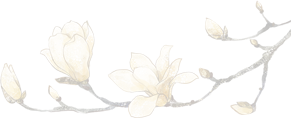- 时间点:
- 时 分 秒 当前视频时间点
- 问题:
-
- 选项一
设为正确答案
新增选项 - 选项一
- 正确跳转时间:
- 时 分 秒 同锚点时间
- 错误跳转时间:
- 时 分 秒 同锚点时间

不止于备课

切换分站

恭喜你,回答正确~
很遗憾,回答错误~
正确答案: ,您可以



1. 本单元主要讨论的话题是假期旅行,贴近学生的生活实际,许多学生都有旅行的经历,所以学生对本单元的知识兴趣比较浓厚;
2. 本单元话题延伸性很强,可以从许多方面进行讨论,例如地点,交通,活动,天气,食物以及旅游感受等方面进行讨论,对学生知识的要求比较综合,可以很有争对性地培养学生的综合语言技能,积极挖掘学生的知识储备。
3. 学生通过第一单元A部分的学习,基本能讨论旅游的某些话题,比如去了哪里,食物怎样,但是缺乏系统的指导;他们的知识比较零散,继续在教师的引导下对自己所学的知识进行综合和归纳,提升自己的听说技能; 同时通过一年的英语学习,学生对小组学习模式熟练,能够互相学习,取长补短,小组长也具备协调组员学习情况,所以继续采用小组学习模式,调动学生的学习积极性。另外,本单元的话题,也需要考虑有的学生由于各种条件限制,并没有外出旅游的经历,教师也需要考虑这部分学生的课堂活动,引导他们分享假期的一些难忘或者有意义的经历,比如帮助父母做家务,阅读有趣的课本,回家乡体验生活等。这些都可以成为本堂课的素材,鼓励学生能多个角度思考问题;看待暑假假期的意义。
4. 另外,本单元的一个重要语法点是继续学习一般过去式,时态的引导也非常重要,学生在表达过程中,要注意对时态进行巩固和运用。同时,要求学生制作手抄报,短视频或影集展现自己丰富多彩的假期,将课堂延伸到课外,大大地扩充了课堂教学容量。
5. 学生通过这堂课的学习和讨论,可以为本单元的阅读和写作做好铺垫,同时让学生通过自己动手制作手抄报,PPT,影集或视频等方式描述自己的假期,他们可以切身体会将所学用于所做所获得的成就感和满足感,对英语学习有不同的感受。
多媒体;学生制作旅游作品所运用的APP; 学生板书所需要的卡纸、马克笔;及小组展示的思维导图卡片;
Ⅰ. Knowledge Objects:
1. Students can use proper adjectives to describe different things, such as food, weather, people, vacation, activity and feelings.
2. Students can use the following target language to discuss their vacation.
Where did you go on vacation? I went to...
What did you do there? I ....
How was the food? It was delicious/ terrible/expensive...
How were the people? They were friendly/ interesting....
Did you do anything special? Yes. I...
Did you buy anything? Yes. I ...
Was the food delicious? Yes. The food was delicious...
Ⅱ. Ability Objects
1. Students can use proper adjectives to describe things through self-directed learning.
2. Students can understand the target language and finish listening tasks.
3. Students can use modern information technology and network technology to make videos or photograph albums to display and introduce their vacations with proper tense and adjectives.
Ⅲ. Moral Objects
Students can have a better understanding about vacation, and they can realize the true meaning of vacations: read ten thousand books and travel ten thousand miles. You can either travel or read, but either your body or soul must be on the way.
教学重点:
1. Students can use the following target language to discuss their vacation.
Where did you go on vacation? I went to...
What did you do there? I ....
How was the food? It was delicious/ terrible/expensive...
How were the people? They were friendly/ interesting....
Did you do anything special? Yes. I...
Did you buy anything? Yes. I ...
Was the food delicious? Yes. The food was delicious...
2. Students can talk about their summer vacation with the simple past tense. They can talk about the weather, the activities, the food, and the people and so on.
教学难点:
Students can use modern information technology and network technology to make videos or photograph albums or draw pictures to display and introduce their vacation.
交际法
合作学习法
活动教学法
任务型教学法
?Teaching procedure:
Ⅰ. Preparation.
1. Have a brief introduction about the team competition. And then invite students to show their team slogans.
2. Warm up with students and play with the video.
3. Students watch a video and the teacher ask a question: where did he go on vacation?
3. Invite some students to make a report about their group members' summer vacation.
4. Students play a word game. The teacher give them some key words(food, weather, people, activity, feelings, vacation) and students use adjectives to describe these key words. If students know the answers, just stand up and show their answers.
(设计意图:本部分首先主要是通过小组团队介绍,宣读小组宣言,用小组竞赛的方式调动学生的积极性。紧接着教师和学生一起做一个热身活动,主要是希望缓解学生的紧张气氛,让他们尽快兴奋起来,融入课堂。接下来,通过展示学生自己制作的视频,引入本节课话题,让学生发表对视频的看法,同时让学生以小组的方式作旅行报告,报告自己小组成员的假期内容,是对A部分知识的一个归纳和复习,巩固一般过去式和有关旅游的词组,同时给学生展示的机会,给他们一个平台让学生表达英语。这一步骤最后一个环节是让学生对所学过的形容词进行复现,在短时间内动用所有学过或学生所知道的形容词,恰当地描述我们旅途当中的所见所闻所感;另外该环节设计也是为之后的听力和口语表达作铺垫,相当于brainstorming的作用,让学生在短时间积极调动各种词汇;同时以小组抢答的形式进行,充分活跃了课堂的气氛,学生也高度集中;并进行了小组评比,调动学生的积极性。)
Ⅱ. Presentation.
1. Students work on 1a and check answers together.
(设计意图:本部分主要处理教材的知识,通过第一个环节的热身和准备,学生们很容易完成1a以及1b部分,所以在课堂上对教材进行了适当的取舍,删掉了1b部分,因为该部分在学生的导学案中也进行了巩固。)
Ⅲ. Practice.
1. The teacher shows a picture of Hong Kong and ask students: which city is it? Do you know anything about this city?
2. Students read the questions on 1c and then listen to the recording and answer the questions. Then check answers together.
3. Students listen again and finish 1d. Then check answers. Before listening, ask students to pay attention to the adjectives.
(设计意图:本环节第一步主要是听力前的准备,让学生对香港进行小小的讨论,同时结合时事,让学生领悟香港是中国不可分割的一部分;紧接着的听力练习,主要训练学生的听力能力,通过听力练习1c和1d的完成情况,检测学生是否听懂了目标语言.)
Ⅳ. Production.
1. Students have a discussion with their group members: if we want to know about people's vacation, what questions should we ask?
2. Students work with their group members and write down the questions on the cards prepared before the class. Then ask them to put their cards on the blackboard.
Questions about summer vacation
Where did you go on vacation? Did you do anything special?
(Special questions) (General questions)
3. The teacher and students comment on the questions together.
4. Students have an interview. Students work in groups and read the interview rules.
Rules:
1. One reporter from each group.
2. Two interviewees in each group.
3. Three questions for each interviewees.
4. The order of the interview:

4. The teacher invites some reporters to show their interviews.
(设计意图:此环节的设计是让学生通过小组合作的方式,讨论目标语言,然后展示目标语言,进行小组评比;然后让学生运用目标语言,模仿采访,提升自己的口语表达能力和沟通能力,同时检测学生是否掌握目标语言和并能灵活运用目标语言;采用跨组合作方式,增进学生之间的交流,让学生更加积极参与到课堂上来,活跃课堂气氛。)
Ⅳ. Progress.
1. Ask students to think about the question: what should we talk about if we want to introduce our vacation to others.
2. Instruct students to finish the following mind map.

3. Display students' mind maps on the screen.
4. Show students' works (videos, photograph album and pictures) about their summer vacation on the screen and invite them to introduce their vacation in front of the whole class.
(设计意图:本环节是这堂课的提升环节,学生分组讨论旅行中的各种话题,然后完成思维导图。思维导图的作用主要是帮助学生形成一个清晰的思路,思考自己介绍假期从哪些话题入手,指导学生系统地介绍自己的假期;下一环节要求学生根据自己的亲身经历,制作短视频,影集或手抄报等,通过思维导图系统地展示自己的暑假;这一环节意在培养学生的综合语言运用能力及动手能力,同时让学生用英语做事,学以致用,提高学生学习英语的兴趣和积极性,同时丰富了课堂资源。)
Ⅴ. Summary
1. The teacher gives a brief introduction and lead students to think about the question: how should we spend our summer vacation?
2. The teacher invites some students to express their own ideas.
3. The teacher makes a summary and encourages students to travel more and read more. Read ten thousand books and travel ten thousand miles. You can either travel or read, but either your body or soul must be on the way!
4. Show the team competition results and invite the winner leader to play the lucky turntable and get their prize for today's performance.
Ⅵ. Homework
1. The teacher assigns homework:
Preview the Jane's diary entries in 2b and finish the following mind maps according to her diary entries.
![]()
![]()

2. Gives students one or two minutes to recall or make a summary about their today's lesson.
(设计意图:每个孩子都有不一样的假期,有的选择出行,有的选择待在家;这里及时对学生进行一个情感的升华:不管学生是哪种方式度过暑假,都应该让学生明白假期的真正意义:旅行可以开阔自己的视野,丰富自己的知识,阅读也可以。旅行和阅读是了解这个世界最好的方式;让学生领悟读万卷书,行万里路;要么旅行,要么阅读,身体和灵魂必须有一个在路上。
下一环节是对学生进行课堂评价,评选出获胜者;同时采用幸运转盘的形式,邀请获胜团队学生代表抽取本节课礼品,可以吸引学生的兴趣,丰富了课堂环节,同时及时对学生进行了评价;
最后一环节是展示家庭作业,设计意图:要求学生能根据今天的所学,画出Jane的假期思维导图,完成对2b阅读的自主预习,让思维导图再一次发挥作用。最后留给学生一到两分钟时间对本堂课进行回顾,总结或者讨论。)
板书设计:
团队评比图:

板书设计:

设为正确答案